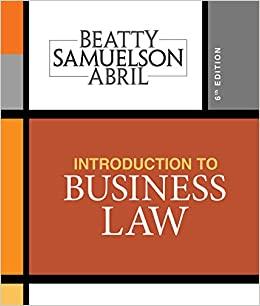Question
Consider the following interaction between a police officer (Player 1) and a motorist (Player 2). At the start of the interaction, the police officer observes




Consider the following interaction between a police officer (Player 1) and a motorist (Player 2). At the start of the interaction, the police officer observes the motorist speeding. The officer has three choices leave the motorst alone (L), pull the motorist over to give her a ticket (7) or pull her over to arrest her (4). If the officer leaves the motorist alone then the game ends and both players get a payoff of 0. If the officer pulls her over, then the motorist decides whether to stay put (s) or drive away (d). When the motorist makes this decision, she only knows that the officer has pulled her over, but cannot tell whether the officer has decided to give her a ticket or to arrest her. If the motorist drives away then she is equally likely to get caught (C) and to escape (E). The von Neumann-Morgenstern payoffs are as follows. . If the officer pulls the motorist over to give her a ticket and she stays put, then the officer gets 3 and the motorist gets -S. Arresting the motorist means extra paperwork for the police officer Therefore, if the officer pulls the motorist over to arrest her and she stays put, then the officer gets a payoff of just 2, while the motorist gets -10. If the officer pulls the motorist over and the motorist drives away and is caught, then the officer gets a payoff of 5, while the motonst gets -15. If the officer pulls the motorist over and the motorist drives away and escapes, then the motorist gets 0, the officer gets -10 if he was pulling the motorst over to ticket her and -11 if he was pulling her over to arrest her (since he will still have to do the extra paperwork) (a) (a.1) Represent this situation as an extensive-form game with the officer moving first. (a.2) Find all the subgame-perfect equilibria, including the mixed-strategy ones (b) (b.1) Now represent the situation in a slightly different way the officer is still moving first but makes his decision in two steps first he decides between leaving the motorist alone (L) and not leaving the motonst alone (-L), in the latter case he then makes the further decision whether to go for a ticket or for an arrest. (b.2) Find all the subgame-perfect equilibria, including the mixed-strategy ones Now let us change the story a little bit There are two types of police officers those (the 7 type) who only give you a ticket (if you were speeding) and those (the A type) who arrest you Each police officer knows his own type, but motorists only know the percentage of police officers who are I types, which is p. The value of p is public information and thus common knowledge. The police officer now has two choices: leave the motorist alone (L) or pull the motorist over (P); the further action (ticket or arrest) is automatic according to the type. The payoffs are as described above. (c) Use states and information partitions to represent this situation of incomplete information Associate with every state the game that is played in that state. (d) Use the Harsanyi transformation to convert the situation of incomplete information into an extensive 3 (e) Find all the pure-strategy Bayesian equilibria of the game of part.




Step by Step Solution
There are 3 Steps involved in it
Step: 1

Get Instant Access to Expert-Tailored Solutions
See step-by-step solutions with expert insights and AI powered tools for academic success
Step: 2

Step: 3

Ace Your Homework with AI
Get the answers you need in no time with our AI-driven, step-by-step assistance
Get Started


